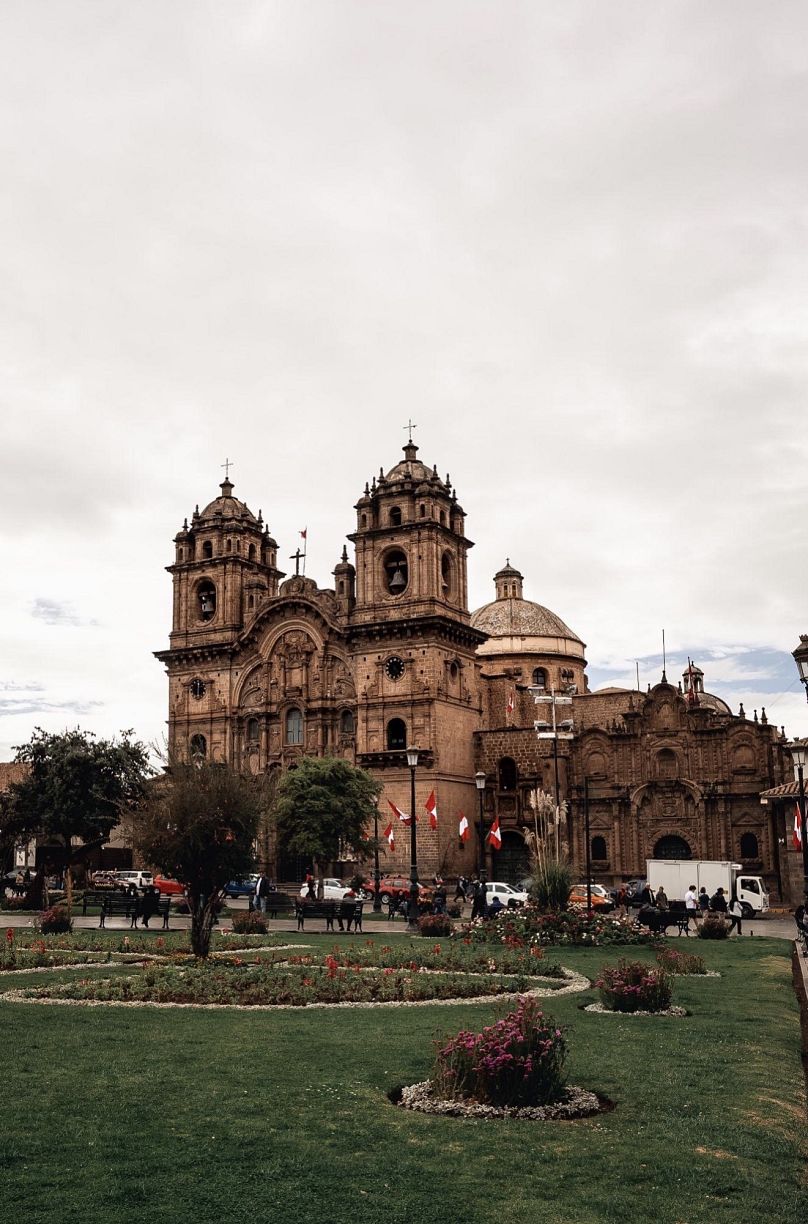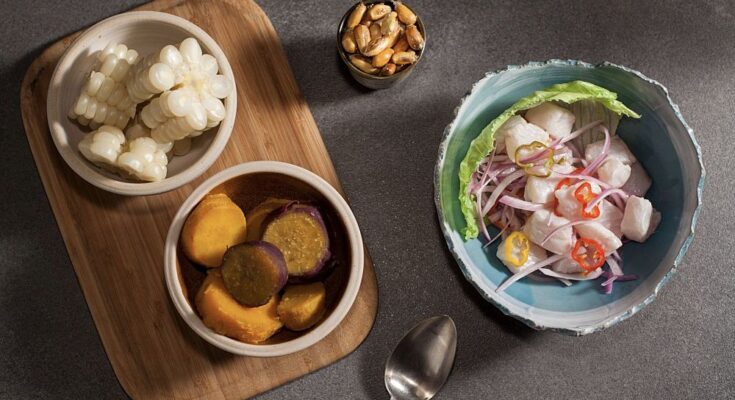From the vibrant capital city of Lima to the enchanting Parque de la Papa – an area dedicated to preserving biodiversity and Incan potatoes, food is a vital aspect of Peru’s culture. While for some, Peru is renowned for its cacao and coffee, it’s also the birthplace of the potato and home to a whole host of superfoods, including quinoa and ‘camu camu’, a red and yellow berry that has some of the highest levels of vitamin C found in nature.
With such a diverse range of ingredients influences, it is no surprise that the country was honoured with the prestigious title of ‘world’s leading culinary destination’ in 2022 by the World Travel Awards.
So if you want to explore Peru’s thriving food scene, where should you begin? Here are some of the best places to experience the culinary delights the country has to offer.
Where are the best restaurants in Lima?
Lima, the Peruvian capital, is the epicenter of the country’s food culture and has become the foodie capital of South America due to its booming restaurant scene.
Peru’s chefs are celebrated for their ability to seamlessly blend culinary influences from around the world, incorporating elements from Japanese, Chinese, Spanish, African, and European cuisine. However, the success of Peruvian cuisine extends beyond the skill of its chefs and the quality of its ingredients. It is the result of a harmonious convergence of various factors, including the abundant natural resources – the biodiversity of the country, its coastal regions, the Andes, and the Amazon rainforest.
The country is home to a huge 84 of the world’s 103 different types of ecosystems. The range of ingredients available here is enormous, so you’re bound to find something you’ve never tasted before, cooked in a way that reflects Peru’s diverse mix of cultures.
This fusion of influences is what makes Lima an enticing culinary destination. Whether you’re seeking refined dining experiences at upscale restaurants or eager to immerse yourself in the vibrant street food scene, the capital offers an impressive array of options to satisfy every palate.
If you want to get a true taste of the capital, here are some of the city’s most renowned and inventive restaurants.

1. Central restaurant in Lima
Making it to the number two spot on the World’s 50 best restaurants list last year, Central is probably the most famous restaurant in South America. Run by Chefs Virgilio Martínez and Pía León, the restaurant is a celebration of the ingredients and landscapes of Peru.
Combining the cultures, traditions and history of the country on each plate, Martínez and León strive to create dishes that speak of the landscape from which they came. Each course takes you through one of Peru’s ecosystems, from the black rocks, 10 metres below sea level, to the Chuncho cacao trees that grow 1,800 metres above it.
2. Maido restaurant in Lima
Swooping into 11th place on the World’s 50 Best Restaurants list is Maido. Here you’ll find food known as Nikkei, a word that’s used to describe both Peru’s Japanese diaspora and Peruvian ingredients shaped by Japanese techniques.
Run by Chef Mitsuharu Tsumura, Maido is a destination for seafood lovers. From sushi rice with river eel, to scallops served with ceviche hot sauce and avocado, Tsumura expertly blends the fresh ingredients of Peru with a dash of Japanese food culture.
3. Mayta restaurant in Lima
Coming in at number 32 on the World’s 50 Best Restaurant list is another Lima staple, Mayta. Now 15 years old, Mayta, run by Chef Jaime Pesaque focuses on serving the finest Peruvian ingredients in a sustainable way. You’ll find exquisitely decorated dishes here, presenting traditional Peruvian cuisine in a modern light. Think scorched baby corn, bold ceviche and rich cacao mousse.
What are the best food destinations in Peru?
Loreto
Located in the heart of the Amazon rainforest, Loreto offers an extraordinary culinary experience that draws from the bountiful resources of the region. The cuisine here showcases a variety of exotic ingredients, taking inspiration from the indigenous tribes and the diverse ecosystem of the Amazon.
The Amazon River is home to an array of species, including paiche, gamitana, and surubi, which are commonly used in traditional dishes. One must-try specialty is “Juane,” a flavorful dish made from rice, chicken, eggs, and spices, all wrapped in bijao leaves and steamed. It is a true Amazonian delight that perfectly blends indigenous traditions with contemporary flavours.
To immerse yourself in Loreto’s culinary culture, venture into the bustling markets of Iquitos where vibrant stalls are brimming with tropical fruits, medicinal herbs, and traditional condiments. Don’t miss the chance to taste “camu camu,” a small round fruit bursting with vitamin C, or indulge in a freshly squeezed “aguaje” juice, known for its vibrant color and creamy texture.
Arequipa
In the southern highlands of Peru, Arequipa proudly stands as a culinary powerhouse, renowned for its exquisite traditional cuisine. Known as the “Ciudad Blanca” (White City) for its beautiful colonial architecture made of white volcanic stone, Arequipa’s culinary scene offers a captivating blend of indigenous, Spanish, and Creole influences.
At the heart of Arequipa’s gastronomy is the world-famous “rocoto relleno,” a dish that embodies the city’s fiery spirit. This culinary masterpiece consists of a spicy red rocoto pepper stuffed with a hearty blend of minced beef, onions, garlic, and Andean spices. It is baked to perfection and served with a side of “ocopa” sauce, made from a unique blend of peanuts, huacatay (Peruvian black mint), cheese, and spices. The combination of flavours is a true testament to the city’s gastronomic prowess.
To round off your culinary adventure in Arequipa, don’t miss out on indulging in “queso helado” (frozen cheese). Despite its name, this unique dessert is not actually made of cheese but is a deliciously creamy ice cream flavoured with cinnamon.
Cusco
Cusco’s cuisine is deeply rooted in its rich Incan heritage and blends indigenous ingredients with contemporary culinary techniques. Traditional dishes like “cuy al horno” (roasted guinea pig) and “llama steak” showcase the region’s ancient traditions, paying homage to the Incan culture. These dishes are often accompanied by the quintessential Peruvian side dish, “papas a la huancaina,” which features sliced potatoes smothered in a creamy and slightly spicy yellow chilli sauce.
No visit to Cusco is complete without experiencing the vibrant San Pedro Market, a bustling hub where locals and visitors come together to explore an array of fresh produce, aromatic spices, and traditional snacks. Here, you can sample delicacies like “chiriuchu,” a platter that features a variety of Andean ingredients including rocoto peppers, dried meat, cheese, and corn. The market is also a great place to try “empanadas,” savoury pastries filled with meats, cheese, or vegetables, reflecting the culinary influence of Spanish colonialism.
The fusion of cultures in Peru has given rise to exceptional flavours and its cuisine provides an avenue to explore different aspects of culture. Tourists leave Peru not only with unforgettable experiences but also a better understanding of the country’s unique and varied culture.











